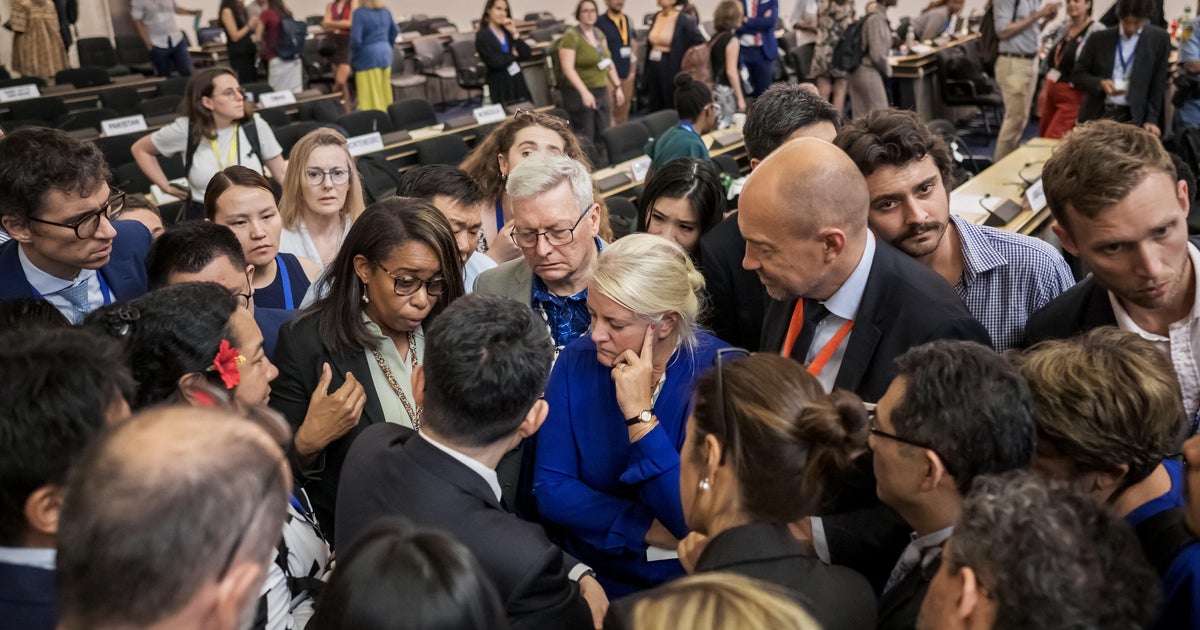Will the Landmark Plastic Pollution Treaty Talks Ever Reach an Agreement?

Addressing the Global Plastic Pollution Crisis: The Unfinished Treaty in Geneva
The ongoing negotiations at the United Nations in Geneva aimed to finalize a groundbreaking treaty to combat plastic pollution have concluded without an agreement. This event marks a significant moment in the global effort to tackle one of the most pressing environmental crises of our time. Delegates from over 180 nations gathered for an 11-day summit, striving to create legally binding regulations to govern plastic production and consumption. However, disagreements over critical issues, particularly around production caps and the management of toxic chemicals, have left the negotiations at a standstill.
Despite high hopes and substantial participation, the treaty remains elusive. Nations were divided on whether to impose limits on the production of new plastics or to focus efforts on improving waste management practices. The backdrop of these discussions involves startling statistics: the world generates over 400 million tons of plastic annually, a figure expected to rise by 70% by the year 2040 unless significant policy changes are enacted.
The Stakes of Plastic Pollution
Plastic pollution is not merely an environmental concern; it poses severe risks to human health, biodiversity, and ecosystems. A report published in the Lancet medical journal highlighted the urgent need to recognize plastic pollution as a "grave, growing, and under-recognized danger." The financial repercussions are staggering, with the health-related economic losses attributed to plastics exceeding $1.5 trillion yearly. This economic burden underscores the necessity for immediate action and robust policies to mitigate the crisis.
During the negotiations, representatives from various countries expressed deep disappointment at the lack of consensus. The aim was to establish the first legally binding treaty on plastic pollution, particularly concerning its impact on marine environments. However, the unresolved issues regarding production limitations and the regulation of toxic chemicals have hindered progress.
Key Issues in the Negotiations
The central contention during the Geneva talks revolved around two primary approaches to address plastic pollution:
- Production Caps: Many countries advocate for strict limits on new plastic production to curb its exponential growth. This approach aims to tackle the root causes of plastic pollution.
- Waste Management Focus: Conversely, oil-rich nations and the plastics industry argue for strategies emphasizing improved waste management, recycling, and reuse without imposing production limits.
The split between these two approaches reflects broader economic interests and the challenges of achieving a unified global response. Over 100 countries have expressed a desire to limit plastic production, highlighting a growing recognition of the unsustainable nature of current practices.
Responses from Global Leaders
As the negotiations fell short of producing a treaty, various leaders voiced their concerns and aspirations. Luis Vayas Valdivieso, chair of the negotiating committee, presented drafts based on the delegates' feedback but ultimately acknowledged the lack of consensus. European Commissioner Jessika Roswall emphasized the need for a treaty that encompasses the full lifecycle of plastics, stating that while the latest draft was inadequate, it provided a foundation for future negotiations.
Saudi Arabian representatives criticized the drafts for lacking balance, particularly regarding the inclusion of plastic production within the treaty's scope. They argued that the focus should be on waste management and reuse rather than restrictive production regulations. This position highlights the ongoing tension between environmental priorities and economic interests.
The Importance of a Comprehensive Approach
Experts have consistently argued that an effective treaty must adopt a comprehensive approach to plastic pollution. This means addressing not only the production and disposal of plastics but also the toxic chemicals involved in their production. Bethanie Carney Almroth, an ecotoxicology professor, emphasized the necessity of incorporating scientific insights into the treaty's design to ensure it effectively protects human health and the environment.
The science surrounding plastic pollution is clear: comprehensive measures that encompass the entire lifecycle of plastics—from extraction to disposal—are essential for achieving meaningful change. This involves restricting harmful chemicals that compromise safety and sustainability, ensuring that the plastics produced are less toxic and more environmentally friendly.
The Role of Stakeholders
The Geneva talks saw participation from a diverse array of stakeholders, including environmentalists, Indigenous leaders, and representatives from the business sector. Many sought to amplify the voices of those directly affected by plastic pollution. Indigenous leaders, in particular, emphasized the need for a treaty that recognizes their rights and integrates their traditional knowledge and practices into environmental governance.
Creative advocacy methods were employed by various groups to highlight the urgency of the plastic pollution crisis. However, the lack of a binding agreement left many advocates feeling disheartened. The disparity between the interests of powerful nations and those of vulnerable communities underscores the complexity of reaching consensus on such a multifaceted issue.
What Lies Ahead?
As delegates departed Geneva without a treaty, questions remain about the future of international efforts to combat plastic pollution. The challenges highlighted during these negotiations are indicative of the broader issues facing global governance in addressing environmental crises. The failure to reach an agreement this time emphasizes the need for continued dialogue and collaboration among nations.
Moving forward, it is crucial for participating countries to reassess their positions and seek common ground. The urgency of the plastic pollution crisis cannot be overstated; it necessitates a collective response that prioritizes sustainable practices and environmental justice. The lessons learned from the Geneva negotiations should serve as a catalyst for renewed commitment to finding solutions that balance economic interests with ecological imperatives.
Frequently Asked Questions
What is the main goal of the treaty on plastic pollution?
The primary aim of the treaty is to establish legally binding regulations to reduce plastic production, manage waste effectively, and address the toxic chemicals involved in plastic manufacturing.
Why are nations divided on production caps for plastics?
Nations are divided primarily due to economic interests. Many oil-rich countries and the plastics industry oppose production limits, advocating instead for improved waste management and recycling practices.
What are the health impacts of plastic pollution?
Plastic pollution poses significant health risks, leading to economic losses exceeding $1.5 trillion annually. It is linked to various health issues, including diseases and environmental degradation.
How can stakeholders influence the treaty negotiations?
Stakeholders, including environmentalists and Indigenous leaders, can influence negotiations by advocating for their rights and emphasizing the importance of integrating diverse perspectives and knowledge into the treaty framework.
The road ahead in tackling plastic pollution is fraught with challenges, but the efforts of negotiators and advocates are vital. What innovative solutions will emerge from future discussions to address this global crisis? #PlasticPollution #EnvironmentalJustice #SustainableFuture
```Published: 2025-08-15 06:36:27 | Category: Trump GNEWS Search



